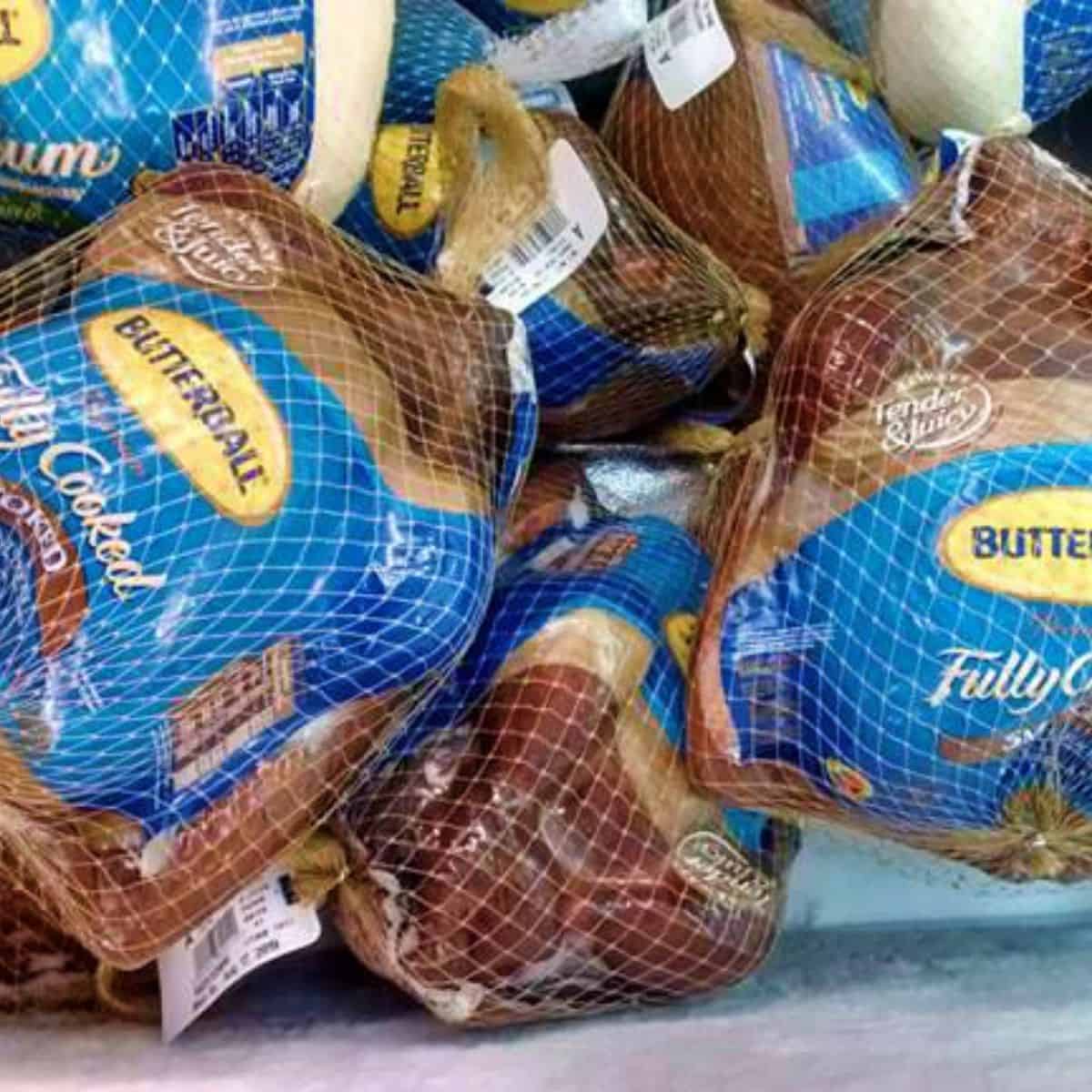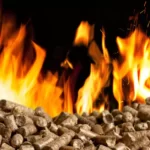Smoking is an ancient cooking method that imparts a distinctive flavor to meats and other foods. It involves exposing food to smoke from a wood or charcoal fire for extended periods, often for several hours. The result is a savory, complex flavor that many people find irresistible.
Butterball is a renowned brand known for its premium turkeys. These birds are appreciated for their juicy, tender meat that is full of flavor. They are often the centerpiece of festive meals, particularly during Thanksgiving and Christmas celebrations.
Can You Smoke a Butterball Turkey?
Is Smoking Safe for Butterball Turkeys?
Indeed, smoking is a safe and delicious way to prepare a Butterball turkey. Like all cooking methods, there are a few safety precautions you should follow. Ensure the bird is thoroughly thawed and cleaned, and always cook to the recommended internal temperature of 165 degrees Fahrenheit.
Benefits of Smoking a Butterball Turkey
Smoking infuses the turkey with deep, smoky flavors that you simply can’t achieve with roasting or frying. Furthermore, the slow, low-heat process of smoking also breaks down the bird’s fats and connective tissues, resulting in incredibly tender and juicy meat.
Necessary Steps to Smoke a Butterball Turkey
Preparing Your Butterball Turkey
A few simple preparations can ensure your smoked turkey turns out perfectly:
- Thaw Properly: If you’re starting with a frozen Butterball turkey, it’s crucial to thaw it correctly. This process can take several days in the refrigerator, so plan accordingly.
- Clean Thoroughly: Before smoking, rinse your turkey under cool water, ensuring to remove the giblets and neck from the cavity.
- Dry and Season: Pat the turkey dry and season it to your liking. This can include a dry rub, a marinade, or a simple coating of oil and spices.
Essential Smoking Equipment
To smoke a turkey, you’ll need a few key items:
- Smoker or Grill: There are several types of smokers available, from charcoal and wood smokers to electric and gas models. The choice comes down to your preference and experience.
- Wood Chips or Chunks: These provide the smoke that flavors the turkey. Choose hardwoods like hickory, apple, or maple for the best taste.
- Meat Thermometer: This tool is vital for checking the internal temperature of your turkey to ensure it’s cooked to a safe level.
Selecting the Right Wood for Smoking
Different types of wood will create different flavors in your smoked turkey. Here are some popular choices:
- Apple Wood: Produces a sweet, fruity smoke that’s mild enough for poultry.
- Hickory: A stronger flavor that’s often used for smoking pork. It’s robust but not overpowering, making it a versatile choice.
- Maple: Provides a sweet, subtle smokiness that enhances the natural flavors of the turkey.
Detailed Smoking Process for a Butterball Turkey
Initial Preparation Stage
Start by preheating your smoker to the ideal temperature range of 225-250 degrees Fahrenheit. At this stage, you can add your wood chips to the smoker. Once the smoker is preheated, position your prepared turkey on the grill rack, breast side up.
Managing the Smoke and Heat
Throughout the smoking process, maintain a steady temperature within the ideal range. Adjust the vents to control the heat, and add more coals or wood chips as needed. Too much heat can cause the turkey to cook too quickly, while not enough heat can lead to an undercooked bird.
Checking the Turkey’s Internal Temperature
An accurate meat thermometer is your best friend when smoking a turkey. Insert it into the thickest part of the thigh without touching the bone. The turkey is ready when the internal temperature reaches 165 degrees Fahrenheit. If the turkey is browning too quickly, cover it loosely with aluminum foil.
Finishing and Resting Period
Once the turkey is cooked, remove it from the smoker and let it rest for 15-20 minutes. This resting period allows the juices to redistribute throughout the bird, resulting in moist, flavorful meat. Carve the turkey and serve it warm.
Tips for Smoking a Butterball Turkey
Enhancing the Flavor with Brine and Rubs
For even more flavor, consider brining your turkey before smoking. A simple brine could include water, salt, sugar, and your choice of herbs and spices. Soak the turkey in the brine for several hours, or overnight if possible, before rinsing and drying it thoroughly.
Monitoring and Adjusting the Smoke
Ensure the smoke is consistent and clean. Thin, blue smoke indicates a good burn, while thick, white smoke can result in a bitter flavor. If your smoker has a window, use it to monitor the smoke without opening the door.
Ensuring the Turkey is Fully Cooked
Aim for an internal temperature of 165 degrees Fahrenheit, as recommended by the USDA. Use a reliable meat thermometer to check the temperature in the thickest part of the turkey’s thigh, without touching the bone. Don’t rely on the color of the meat or juices as an indicator of doneness.
Common Mistakes to Avoid While Smoking
Avoiding Undercooking or Overcooking
Consistency is key in smoking. Maintain a steady temperature throughout the smoking process to ensure your turkey cooks evenly. Regularly monitor the smoker’s temperature and adjust as needed.
Preventing Drying Out
Smoking is a long process, and it can potentially dry out your turkey if not done correctly. Keep the smoker closed as much as possible to retain heat and moisture. Additionally, using a water pan in your smoker can help maintain humidity and prevent the bird from drying out.
Addressing Issues with Smoke Production
Too little or too much smoke can affect the flavor of your turkey. If you’re not getting enough smoke, consider adding more wood chips or chunks. If there’s too much smoke, adjust the vents to allow for better airflow.
Frequently Asked Questions
How Long Does It Take to Smoke a Butterball Turkey?
The exact smoking time can depend on several factors, including the size of your turkey and the temperature of your smoker. As a general rule, aim for about 30 minutes per pound of turkey. However, always use a meat thermometer to check for doneness rather than relying solely on time.
Do I Need to Brine My Butterball Turkey Before Smoking?
While not necessary, brining can add flavor and moisture to your smoked turkey. You can use a simple solution of water, salt, sugar, and your choice of seasonings. Remember to rinse and dry the turkey thoroughly after brining.
Can I Use Any Type of Wood to Smoke My Butterball Turkey?
The best wood for smoking turkey is typically a hardwood due to the flavors they impart. Common choices include hickory, apple, and maple. Avoid resinous softwoods like pine, as they can result in a bitter flavor.
Conclusion
If you’re looking to add a smoky twist to your traditional turkey feast, smoking a Butterball turkey is a great way to do it. From the preparation of your bird and your smoker, to maintaining the right temperature and smoke level, each step contributes to the final, mouth-watering result.
Remember, patience is key when smoking. The process can take several hours, but the end result is well worth the wait. By following these steps and tips, you’ll be well-equipped to smoke a Butterball turkey to perfection.







